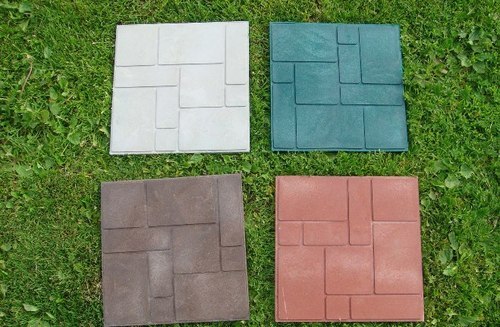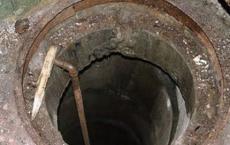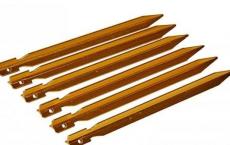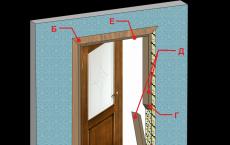Features of the choice of polymer paving slabs
The appearance of new materials is always perceived by the buyer with some apprehension. Will they be durable and reliable, will they require additional costs to keep them in good shape?
These and many other questions make the manufacturer prove the quality of his product in practice. Approximately this happened with polymers. These materials appeared relatively recently and initially aroused distrust among consumers.
But gradually, polymer paving slabs proved their superiority over other coatings used for arranging pedestrian areas, garden plots and other similar objects. It has a lot of positive qualities and differs significantly from traditional concrete products.
What is this material
The development of polymer tiles was carried out taking into account the possibility of its use in regions with the most difficult climatic conditions. It was created as an alternative to existing types of coatings and was supposed to have high strength and resistance to temperature extremes. It should be noted that the manufacturers managed to achieve their goal.
Watch a video of what this tile is like:
The material really turned out to be one of the most reliable and can compete in strength even with natural stone. The basis of polymer paving slabs is made up of three components:
- Sand with fractions no more than 3 mm;
- Primary polymers;
- Dyes.
Moreover, it is sand that prevails in the composition. For some tile models, its amount is up to 75% of the total volume. In the manufacture of the material, sand goes through several stages of processing:
- Screening;
- Washing;
- Calcination.
This allows to achieve a uniform structure of polymer tiles for sidewalks, which explains its high strength.
Such material is used today as a coating for sidewalks, footpaths, bus stops. It is no less popular with landscape designers who have managed to appreciate not only the excellent performance of the product, but also its aesthetic features.
Types of polymer tiles
The mixture on the basis of which this material is produced allows it to be produced in a wide range. Polymer tiles are subdivided according to such parameters as:
- The form;
- Size;
- Color spectrum.
Moreover, there are products both the simplest - rectangular, and having a rather complex geometric shape. They may also vary in thickness.
The texture of polymer-sand paving slabs is:
- Rivne;
- patterned.
The first option is chosen for secondary paths in the garden. The second, due to its aesthetic qualities, allows you to implement quite complex and interesting design solutions. But still, which paving slab is better polymer or concrete?
Material Specifications
The quality of polymer tiles depends on the raw materials used, as well as the production equipment. However, there are general characteristics that each product of this class possesses. These include:
- Density;
- Dimensions;
- Water absorption;
- abrasion;
- Frost resistance;
- Lifetime.
For paving slabs made of polymeric materials produced by various manufacturers, some of them, for example, may differ in size. But as for the rest, they must comply with those specified in the accompanying documentation.
Advantages and disadvantages
But still, why has this material become so popular lately? After all, many of the coatings produced are durable and beautiful. However, polymer tiles win. To find out why it is worth studying its main differences from other materials. They are as follows.
Watch the video about the advantages of the polymer:
Manufacturability is one of the best among analogues, since polymer tiles can be laid using special machines or manually. At the same time, installation does not require special preparation and a minimum of time is required.
The laying of the material is carried out with the presence of gaps between the individual elements - this allows you to freely remove excess moisture and eliminates the formation of puddles on the track. Caring for such a coating is one of the easiest.
The advantages of the material include the rough surface of the tile, which excludes cases of injury even in rain or at low temperatures. Therefore, it is very often used for arranging sites around pools and ponds.
Despite the use of artificial materials in the composition of the tile, it is environmentally friendly. Even at high temperatures, it does not emit harmful substances into the atmosphere.
Advantages compared to cement or concrete tiles, watch the video:
Repairing a walkway tiled with polymers is quite simple. If one or more elements fail, they can be easily replaced with new ones. Such material is almost impossible to damage due to its high strength and ductility. Its service life reaches 50 years at a cost of not more than 600 rubles per square meter.
Polymer tiles are produced in a wide range of colors, but its only drawback is fading in the sun.
The disadvantages also include the ability of the product to expand at high ambient temperatures. Therefore, when laying, the paving technology should be observed, providing for gaps between the elements of 5 mm.
Famous brands - which one to choose
In the domestic market, you can find products from a variety of manufacturers. Among them there are both foreign companies with a worldwide reputation, and domestic corporations organized more recently. Moreover, the products of the latter are in no less demand due to their low cost. Among Russian manufacturers, the most famous are:
- Namus;
- Prompolymer;
- Budprom-Technology.
The polymer tiles of these companies have already gained popularity among domestic buyers due to the optimal ratio of quality and price. This can be asserted with confidence by examining the prices of these manufacturers. The Namus company produces tiles with a size of 330 × 330 mm with a thickness of 20 or 35 mm.
 Paving slabs Namus
Paving slabs Namus
The manufacturer's collection includes four basic colors:
- Green;
- Brown;
- Red;
- Gray.
In addition, the tile is available in three series that differ in texture:
- Parquet;
- smooth;
- 8 bricks.
The material is made from a polymer-sand mixture using modern equipment. And at the same time, the cost of one square meter of this tile is only 500 rubles.

The products of the Prompolymer company are similar to those discussed above. However, it does have some differences. Firstly, it is produced with a thickness of 20 and 40 mm and can be made in the form of:
- broken stone;
- Diamond.
But still, the main advantage of Prompolymer products is a lower price, starting from 350 rubles / m².
Concern Budprom-Technology also specializes in polymer-sand paving slabs, having thoroughly mastered its production. It produces material with different raw material composition belonging to different grades. Each of them has a certain value. The first is the most expensive, the price for such a tile reaches 620 rubles / m², while products of the second grade cost no more than 510 rubles, and the third and even cheaper.
Laying such material does not cause any particular difficulties, even for those who have not had to deal with similar work before. It consists in carrying out preparatory activities, such as preparing the foundation.
It can be sand, concrete or rubble. The choice of a particular type depends on the type of soil and the characteristics of the operation of the paved area.
For garden paths, they are usually limited to a sand cushion; if it is planned to equip a parking space, then crushed stone should be used. In the case of intensive use, a concrete foundation is required to receive freight transport.



